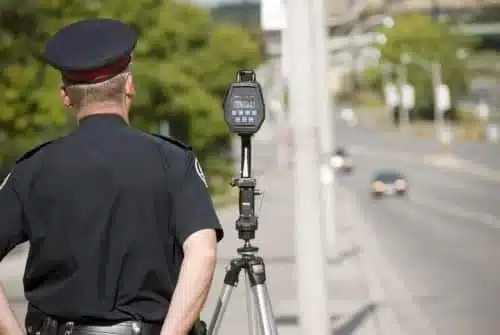
Have you or a loved one been injured by a negligent driver? Contact Ali Awad, ‘The CEO Lawyer’, and his team of experienced personal injury attorneys by calling (470) 323-8779 or contacting us online. Attorney Ali Awad, ‘the CEO Lawyer,’ established the CEO Lawyer Personal Injury Law Firm and quickly turned it into one of the fastest-growing law firms in the country. When you need help with a car accident claim, the CEO Lawyer Personal Injury Firm provides free consultations, and if we take your case, you won’t pay anything until we win.
Accident Reconstruction – Professional Opinions
A valuable asset in successfully determining fault in an accident is the analysis provided by a skilled accident reconstruction professional. Trained collision reconstruction experts have the knowledge to apply scientific analysis to gather collision evidence and clues to determine the facts of the case. These experts may determine the speeds of involved vehicles before and after a driver applied their brakes and aid in determining whose fault the collision was. Speeding may be determined by:
- Length of road skid marks
- Amount of impact a vehicle suffered
- Damage to the surrounding area
- Type of vehicle
- Auto manufacturer vehicle component data
Evidence from the Accident Scene
For example, if the car that was hit had its bumper destroyed and the bumper on that specific make and model is designed to withstand impacts up to 20 MPH, a qualified accident reconstruction professional could determine that the vehicle was likely traveling at a speed greater than 20 MPH. In addition, the length and appearance of skid marks calculated with the drag factor and braking performance of the make and model of the vehicle involved will help determine the exact speed of the car and whether or not speeding was a factor in the collision.
Camera Footage & Eyewitnesses
If there were any eyewitnesses at the scene of the accident, they might be able to contribute reliable testimony that can be used to calculate the vehicle’s speed. Camera footage will be even more helpful in determining the exact details leading up to the accident. While accident reconstruction experts may be reserved only for complex cases due to cost, most insurers and attorneys rely on camera footage and witness statements to determine accident fault.
How Many Accidents Are Caused by Speeding?
How many accidents are caused by speeding? Although the number of annually reported vehicle crashes is on the decline, for the last few decades, nearly ⅓ of all vehicle fatalities involved speeding, and this rate has risen since 2019. In 2020, 11,258 motor vehicle collision fatalities were attributed to speeding, and speeding was reported as a factor in 29% of all traffic fatalities. Additionally, it was found:
- In fatal crashes, the rate of speeding contributing to the fatality, decreased on average as the driver’s age increased.
- Male drivers between 15-24 were the most likely to be found speeding during a fatal collision.
- For all traffic fatalities reported in 2020 involving moving or standing water, 45% involved speeding.
- In 2020, over 1,200 traffic deaths were attributed to speeding in the state of California alone.
How To Prove Someone Was Speeding in an Accident?
If you have been involved in a car collision due to the negligence of another driver, it is crucial to prove the other driver was speeding to recover compensation for your injuries. Drivers must abide by speed limits, as they were explicitly designed to reduce the risks of vehicle accidents and keep drivers safe on the road. A driver is placing others at risk by failing to comply with a speed limit and behaving negligently. The faster a driver speeds, the more damage they can incur when involved in a collision with another motorist. Consider the following steps below after an accident to help determine who is at fault:
Speak to Witnesses
If you are able, speak with witnesses after the accident and obtain their contact information to receive their account of what led to the accident and what they saw. Eyewitness testimony can be a critical part of a successful accident claim and is commonly used to prove that a driver is at fault or was speeding moments before the accident.
Obtain Camera Footage
It is possible, depending on where the collision occurred, that the collision may have been caught on camera from either a nearby home, business, or bystander. Homes and businesses often have surveillance systems that may be used to prove fault in an accident. A Georgia car accident attorney may contact homeowners and business owners in the area surrounding the car accident scene to determine if they may have any camera footage of the accident.
Pictures of the Accident
Photos of the accident scene may be used as evidence that you or the other driver were speeding. Accident reconstruction experts, attorneys, or insurers may examine photos of the collision to determine the facts surrounding the collision.
Car Accident Attorney
Have you been involved in a collision due to a driver that was speeding? If so, contact the experienced legal team at the CEO Lawyer Personal Injury Law Firm by calling (470) 323-8779 or contacting us online. When you need help with a car accident claim, the CEO Lawyer Personal Injury Firm provides free consultations, and if we take your case, you won’t pay anything until we win.



